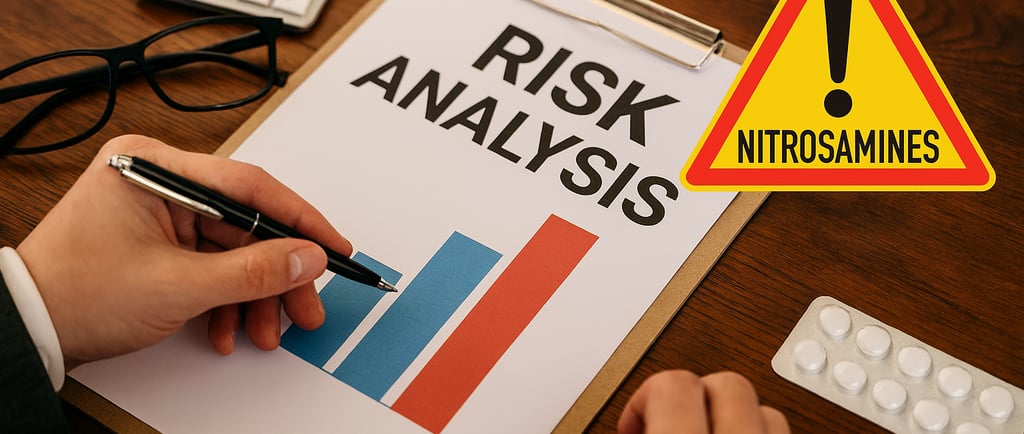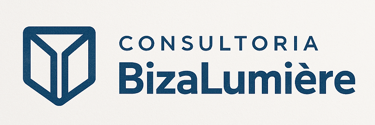Risk Analysis and Impurities: Technical Intelligence for Reliable Decisions
ANÁLISE DE RISCO E ANVISA
Marcelo Bizarro
10/1/20254 min read


In pharmaceutical analytical laboratories — whether in Research & Development or Quality Control — risk and impurity assessment is no longer a one-off regulatory requirement. Today, it’s a core part of technical strategy, patient safety, and the robustness of generated data.
At BizaLumière, we provide technical and scientific support to conduct these analyses with depth, solid foundation, and real-world applicability.
What’s at stake?
Impurities are not just numbers in a specification. They can compromise:
The efficacy of the drug
Patient safety
Regulatory approval
The company’s reputation
That’s why every impurity — whether elemental, residual, process-related, or degradation-derived — must be understood, classified, and controlled based on technical and toxicological risk.
⚠️ What Is Risk Assessment in the Pharmaceutical and Chemical Industry?
Risk assessment is a systematic process that identifies, analyzes, and evaluates potential issues that may compromise the quality, safety, efficacy, and regulatory compliance of pharmaceutical and chemical products.
It is an essential part of a robust Quality Management System, applied from development through commercialization.
Guidelines and Regulatory Standards
This practice is supported by international and national standards that guide its implementation:
ICH Q9(R1) – Quality Risk Management
A core document that defines principles and tools for managing quality risks. Widely adopted by agencies such as EMA, FDA, and ANVISA, its revised version reinforces the importance of risk-based decision-making.ANVISA – Guide No. 62/2023
Adopts ICH Q9 principles and adapts them to the Brazilian context, detailing steps such as risk identification, analysis, evaluation, control, and communication.FDA – Quality Systems Approach to Pharmaceutical CGMP Regulations
Emphasizes risk assessment as a tool to ensure compliance with Current Good Manufacturing Practices (CGMP).USP <1060> and <1092>
Address risk aspects in analytical processes and impurity control.
Practical Applications
Risk assessment is used across various areas:
Analytical Development and Validation
Identifies critical variables that may impact method reliability.Impurity and Nitrosamine Control
Assesses the likelihood of formation and toxicological impact of impurities, guiding preventive actions.Deviation Management, CAPA, and Equipment Qualification
Prioritizes corrective actions based on severity and likelihood of occurrence.Pharmacovigilance and Benefit-Risk Assessment
Continuously evaluates the safety profile of medicines post-marketing, as required by guidelines like ICH E2C(R2) and RDC No. 406/2020.
Benefits
Evidence-based decision-making
Focus on failure prevention and mitigation
Greater regulatory and operational efficiency
Strengthening of quality and safety culture
How We Work at BizaLumière
We provide technical support for:
Nitrosamine Risk Assessment
Evaluation based on chemical structure, manufacturing process, and formation potential.Elemental Impurities Risk Assessment
Classification according to ICH Q3D, PDE calculation, and control strategies.Extractables and Leachables Risk Assessment
Risk evaluation through packaging interaction, based on literature and simulated studies.Degradation Products and Related Impurities Risk Assessment
Interpretation of stability and forced degradation studies, focusing on safety and compliance.Process Impurities and Synthetic Intermediates Risk Assessment
Identification, justification, and proposal of technical control strategies.
All of this is grounded in scientific literature, regulatory guidelines (ICH, ANVISA, EMA), and technical reasoning tailored to laboratory reality.
What We Deliver
Technical and toxicological impurity assessment (via specialized partner)
Interpretation of stability and degradation studies
Scientific research in regulatory and academic databases
Proposal of control and mitigation strategies
Technical reports with clear and applicable language
Types of Risk Assessment
Nitrosamines
Technical Approach: Structural assessment and formation potential
Regulatory Basis: EMA, ANVISA, ICH M7
Elemental Impurities (Metals)
Technical Approach: PDE calculation and class-based categorization
Regulatory Basis: ICH Q3D
Extractables and Leachables
Technical Approach: Migration simulations and compatibility studies
Regulatory Basis: USP <1663>, <1664>
Degradation Products
Technical Approach: Stability interpretation and forced degradation studies
Regulatory Basis: ICH Q1A, Q3B
Process Impurities
Technical Approach: Technical justification and analytical control
Regulatory Basis: ICH Q3A, Q3C
Problem Categorization Matrix: Clarity for Action
To conduct analyses with focus and precision, we use a technical matrix that classifies problems by origin, impact, and approach:
Process Impurities
Examples: By-products, residual reagents
Likely Origin: Synthesis and purification steps
Impact: High
Expected Treatment: Technical justification and analytical control
Elemental Impurities
Examples: Heavy metals, catalysts
Likely Origin: Raw materials, excipients, water
Impact: High
Expected Treatment: Toxicological evaluation and PDE calculation
Degradation Products
Examples: Resulting from stability, oxidation, hydrolysis
Likely Origin: Stability conditions and packaging type
Impact: High
Expected Treatment: Stability studies and specification review
Genotoxic Impurities
Examples: Chemical structures with structural alerts
Likely Origin: Manufacturing process and packaging
Impact: Critical
Expected Treatment: Evaluation according to ICH M7 and analytical control
Extractables and Leachables
Examples: Migrated compounds from packaging
Likely Origin: Materials in contact with the product
Impact: High
Expected Treatment: Simulated studies and compatibility review
This matrix allows investigations to be conducted with focus, agility, and depth — without compromising technical rigor.
Why Choose BizaLumière?
Because here, you’ll find technical consulting with scientific depth.
🔬 Technical consulting grounded in scientific expertise
🧪 Focused on practical application and laboratory routine
🚫 No audits — just real technical support
🎯 Personalized service, straight to the point
We don’t offer audits — we offer real support for those at the bench, facing complex decisions and seeking safe, well-founded solutions. We work with professionals who need clear answers, reliable decisions, and solutions that work in practice.
Need Technical Support for Risk and Impurity Assessment?
BizaLumière is ready to help. We provide technical and scientific support for:
Complex analytical investigations
Toxicological and regulatory risk assessments
Interpretation of stability and impurity studies
Proposal of practical, evidence-based solutions
Get in touch with BizaLumière and discover how to turn analytical complexity into clear, safe, and reliable decisions.


BizaLumière’s Process Flowchart
[1] Problem Identification
↓
[2] Technical Scenario Analysis
↓
[3] Scientific and Regulatory Research
↓
[4] Risk and Impact Assessment
↓
[5] Proposal of Practical Solution
↓
[6] Delivery of Technical Report
BizaLumière
Specialized consulting in Technical Documentation and Analytical Regulatory Requirements
ContaCTS
newsletter
© 2025. BizaLumière. All rights reserved.

Privacy Policy
